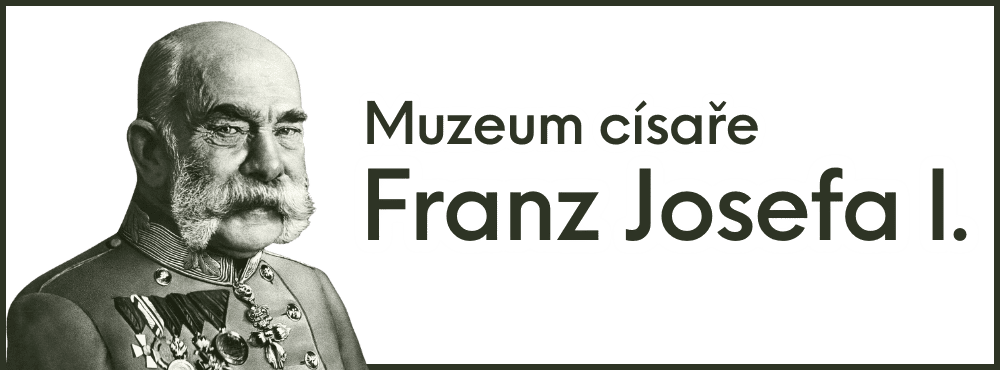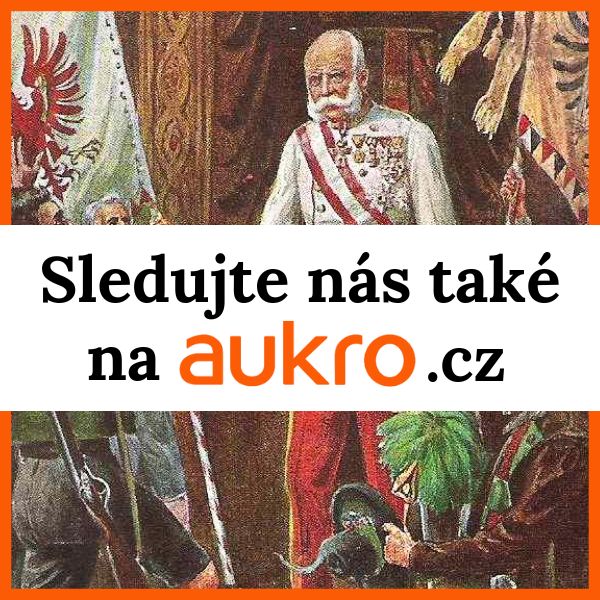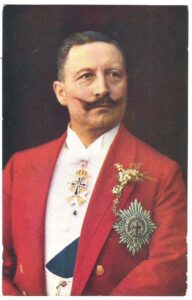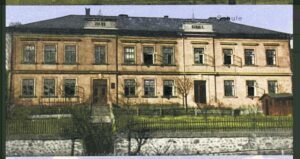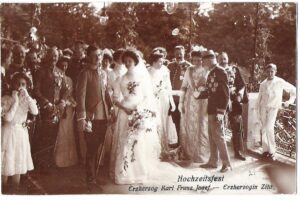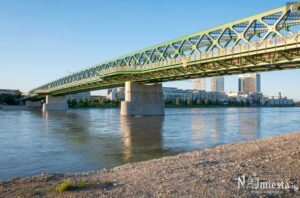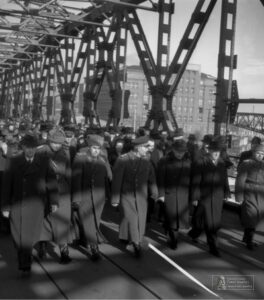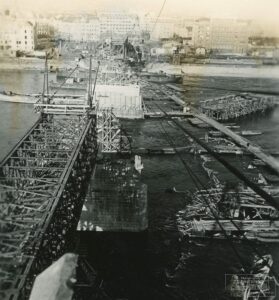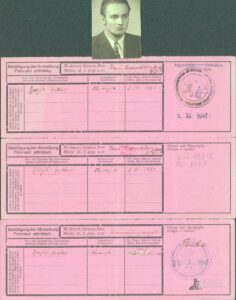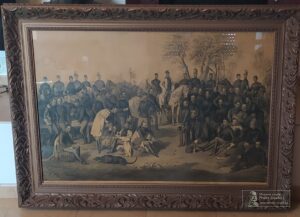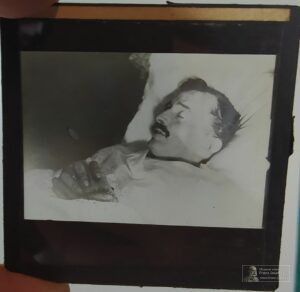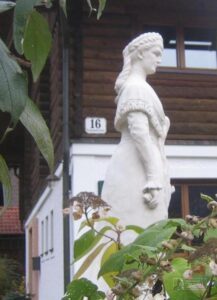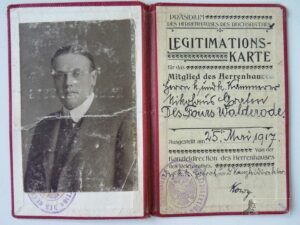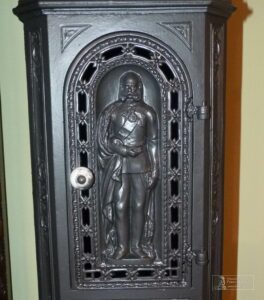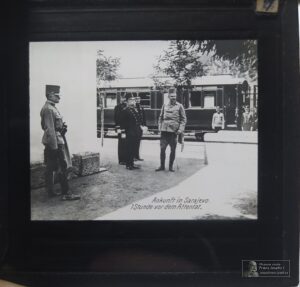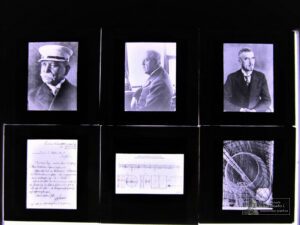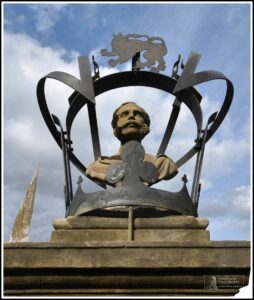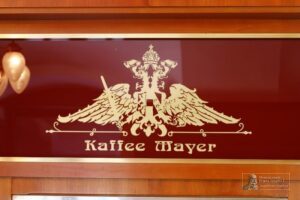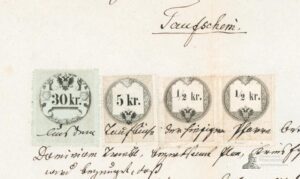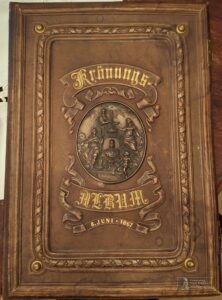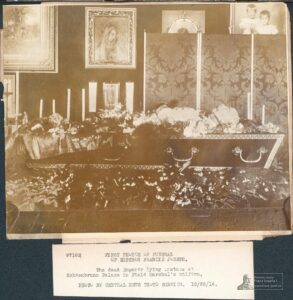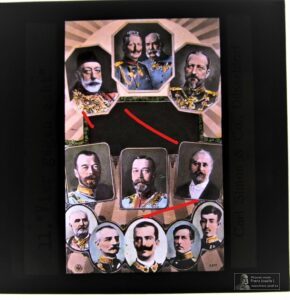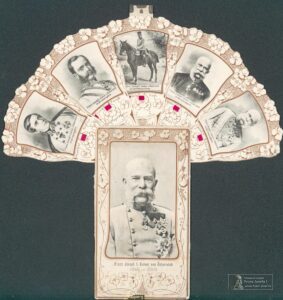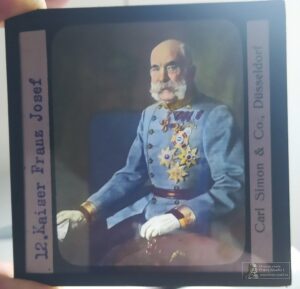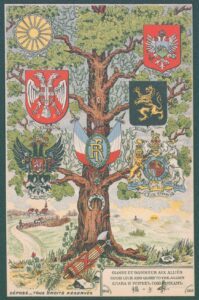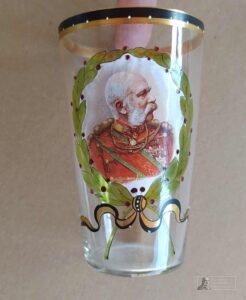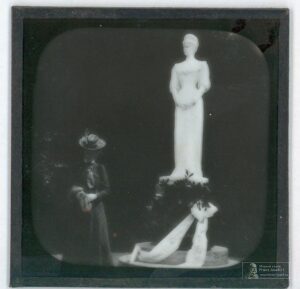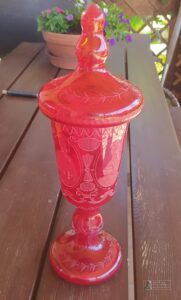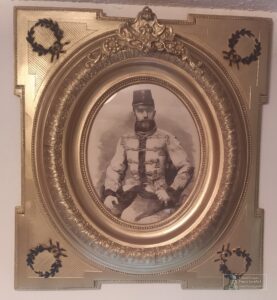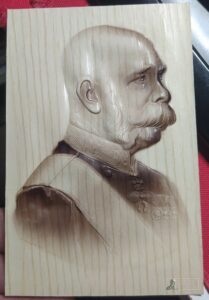The Old Bridge in Bratislava in historical context
October 19, 2020
Construction magazine It was published in the 09/2020 issue
Ing. Michael Trnka, CSc., while organizing his archive, found a remarkable memory of the time when the Danube bridge in Bratislava, destroyed in 1945 by the retreating German army, was being repaired just after the war. The document entitled To the history of the fastest construction of the first post-war Bratislava bridge is written on a typewriter; at its end is the illegible signature of Ing. Chickens. We present the document in its original version with only minor editorial changes as a contribution to the celebration of the 75th anniversary of the end of World War II.

REPAIR OF THE OLD BRIDGE OVER ITS RUINS
Authors:
Ing. Michael Trnka, CSc.
Petr Zázvorka
Ing. Maxim Kurečka: To the history of the fastest construction
The construction of this steel bridge over the Danube in Bratislava actually started far away, in Prague. It was in office #408, in IV. floor of the building of the general directorate of the Báňská and metallurgical company at Lazarská Street No. 7. Here I worked as a procurator and my work included, among other things, the department of steel structures, or the Mostárna Karlova hut in Lískovec, which we managed from the economic point of view and in addition they provided various technical assistance (in negotiations with central authorities, with professional and scientific and other institutions, but especially in the implementation of assemblies).
An unusual visit
It was in this office towards the end of August 1945 that a visiting officer came excitedly to inform me that two men were looking for me, one a civilian and the other in uniform. They refused to state the purpose of the visit. That didn't exactly sound very encouraging, but there was no choice but to invite the visitor further. At the very first moment, everything was explained, because the civilian was my good friend, section chief Mr. Bondy, now in the role of commissioner of the Ministry of Industry, who accompanied the Soviet colonel of the engineering staff of the army, Marshal Konev. The section chief said that these are bridge constructions for the Red Army, and the ministry has an eminent interest in meeting these requirements as much as possible. Our Karlova smelter was already known for its agile approach to the most pressing problem of restoring destroyed steel bridges in Slovakia and was more than fully utilized at the time (in the end we repaired almost 150 different bridge objects).
As it became clear from the colonel's speech, the Red Army (hereafter RA) needs to quickly start the construction of a total of five bridges over the Danube: one in Bratislava, one in Komárno, two in Vienna and one in Budapest. Completion date no later than December 31, 1945 - four months from now. Of course, I had to reject this completely unfulfillable request as completely unrealistic, even assuming that all eight Czechoslovak bridge factories would participate in the event. After a long and heated discussion, we finally agreed that, under certain conditions, a maximum of two bridges on Czechoslovak territory could come into consideration. I ended up proposing the following:
a) The bridge in Komárno, where only a few trusses were damaged, so the structure did not collapse, is able to be repaired by the Mining and Metallurgical Company, specifically the Karlova huť bridge plant in Lískovec.
b) The bridge in Bratislava, totally destroyed in the four central spans with the largest spans, with a total length estimated at about 340 m, cannot be built at all in the short term as a normal bridge.
c) It would be possible to consider the production of the RW (Roth-Waagner) war bridge, which was also used by the pre-war Czechoslovak army - provided, however, that it would be possible to quickly obtain the materials for production (steel templates).
d) Another necessary condition was that it would be possible to involve other Czechoslovak bridge builders in the event, and especially an engineering construction company that would reliably guarantee the restoration of the devastated pillars.
e) RA will immediately take measures to recover the wreckage of the demolished bridge from the Danube river bed.
f) As regards the bridges in Vienna, it was recommended to contact the Roth-Waagner bridgeworks in Floridsdorf, and for the bridge in Budapest, the bridgeworks in Györ or Ráb.
g) The binding date will be agreed after checking the fulfillment of conditions c), d) and e) additionally before concluding the contract with RA, which will be the client.
This proposal was accepted as the only possible way out with the hope of satisfying the extraordinary requirements of the engineering staff of Marshal Koněv's army. Towards the end of the meeting, which lasted for over three hours, Section Chief Bondy gave a verbal order to start the action immediately. And I was finally able to escort the visitor to the elevator. Crowds of people, who until now had been prevented by the red light, immediately began to pour into the office - do not enter, either for a signature or to take care of something so important that it could easily wait two days. Most of all, everyone was interested in who and why they were investigating me. My excuse that it was new bridges was not believed much at the time.
Construction preparation
There was literally the real infernal dance that lasted without a break for a full five months. Working hours on average 12 to 14 hours, holiday, non-holiday, day or night. We started without an order, without a project, without a construction company, and we didn't even know the basic parameters of the bridge - for example, the spans of the bridge panels, let alone the weight of the structures.
The following issues had to be resolved as quickly as possible:
1) Obtain other Czechoslovak bridge factories for cooperation, establish a proper and unified consortium and prepare everything for concluding a contract with the RA.
2) Ensure cooperation with an experienced engineering construction company that would be able to guarantee the demanding repair of the pillars within the given fixed deadlines at an impeccable professional level.
3) Prepare the design of the assembly of RW elements of the bridge structure
4) Ensure the production of parts by providing steel templates and divide it as efficiently as possible between the individual bridge factories.
5) Ensure assembly, including cooperation with the Czechoslovak army, and provide assembly machines and tools.
6) Provide final stress tests and preparation for them.
7) Develop a binding deadline schedule for the progress of component deliveries, assembly and construction work.
8) Free the flow of the Danube from the debris of collapsed structures.
All these phases of activity took place simultaneously, as they interwoven and often crossed each other. Nevertheless, in the end, everything was managed, especially thanks to the understanding of the matter and mutual cooperation, which was finally managed to be awakened in all participants.
Realization of construction
The consortium of most factories was established only with difficulties and was only partially successful. Because immediately three of the big most factories categorically refused their participation in the event (Škodovka, ČKD and Podbrezová). Therefore, in the end, only four bridge factories remained: Báňská and hutní, Vítkovice, Ipen in Hradec Králové and Královopolská Brno. The reasons for this failure were that some partners could not be convinced that in this absolutely exceptional case a little risk was necessary if the event was to meet with success. The terrifyingly short deadline (January 1, 1946) was especially frightening, as none of the representatives of these three bridge factories had personal experience with the speed of assembling wartime RW bridges, although these had been known since the First World War. The reason for my rock-solid optimism was that I myself had undergone the relevant training at the "Brückenbatalion" in Linz on the Danube as part of the officers' school. Another invaluable support for my belief that the event can be managed within the required deadline was the cooperation with Eng. Dr. Husákem, who completed his university studies at a military college of engineering, underwent training at the railway regiment in Pardubice, and was therefore thoroughly familiar with the problems of RW bridges, both theoretically and practically. In the end, the strongest support was the result of preliminary negotiations with representatives of the Czechoslovak engineer army, from which it was almost certain that we would be able to get the help of specialists from the army for the assembly.
In this way, it was possible to draw up a time schedule for the entire production, construction and assembly, and based on it, a contract was signed with the RA with a deadline of January 15, 1946. (The negotiation - or rather the fight for this deadline - lasted two full days and was also conducted by means not exactly pleasant). In the end, the deadline could not be met, but more on that in the assembly section.
The participation of the construction company Hrabě and Lozovský
In the end, the participation of the construction company was solved quickly and without much difficulty, although it was a key problem of the entire construction process, because without the reliable provision of a professionally performed reconstruction of the demolished three pillars, the whole event would simply be impossible. Although there was no qualified professional company in Bratislava at the time that could provide sufficient guarantees that it was able to handle such a demanding task reliably in a short period of time and in the most unfavorable time of the year, it was possible to find a branch of a Prague construction company that had all the prerequisites for the implementation of this part of the building. It was the company Hrabě and Lozovský, whose co-owner Ing. Lozovský (himself a native Russian) showed an extraordinary interest in this work from the very beginning and during the entire construction period he managed this entire part of the building with great initiative and success. The plant was well equipped both in terms of personnel and (especially) in terms of mechanization, so construction work was carried out at a high professional level and on time, despite extraordinary difficulties. The only exception was Pillar No. 2, where the preliminary survey – very difficult and demanding – failed to capture the full extent of the destruction. That is why there was a considerable delay here, because it was necessary to use steel larsenka to rehabilitate the pillar (the pillar was disturbed below the level of the Danube). However, this delay carried over to assembly in just two weeks as a temporary steel frame support was operationally fabricated and installed. It was a clear case of "vis majeure" and was confirmed as such in the final assessment of the term.
Odeslat zpětnou vazbu
Postranní panely
Historie
Uloženo
Přispět
Assembly of elements of the bridge structure of the RW system
The design of the bridge elements of the RW system encountered great difficulties from the beginning, because, as already mentioned, we did not even know the basic parameters of the bridge - for example, the span of individual bays. The documentation of the old destroyed bridge was not found, so the data had to be obtained by laborious targeting. Also, the documentation (drawings and tables) for the RW system was not available. Today, I no longer remember the details of this phase of development exactly, but I fondly remember the cooperation with the commander of the engineering troop, General Ing. Čermák, on whose order technical assistance to all our workers was given the go-ahead by members of the military (if they knew anything about the RW system). This is especially true of the railway regiment in Pardubice, where the most valuable documents, information and material were obtained. Finally, Ing. Dr. Husák, who worked for us as a structural engineer, managed to obtain so many documents that he could design the assembly of the entire structure after a static assessment. It was four fields with a width of approx. 80 + 80 + 92 + 80 m (actually 75 + 75 + 91.5 + 75 m - editor's note). Only now was it possible to draw up an exact breakdown of the RW system parts and get an overview of the actual scope of delivery.
Production of parts
Therefore, it was only now possible to divide the production of the parts between the four bridge factories and to supply them with the relevant bars and sheets, which had so far been rolled in advance in Třinec and Vítkovice. Above all, however, a fundamental decision had to be made: due to the short deadline, it was necessary to start the assembly before the end of the production of parts in the bridge factories, so the production had to be controlled according to special assembly specifications. This allowed the assembly to continuously supply the elements that were in line at the given time. Another, and even more important, condition for starting the production of parts was the provision of steel templates, which are absolutely necessary for the production, and only a small amount of these were found in the Czech Republic, some were obtained through the railway regiment, some at the Ipen bridge factory in Hradec Králové, but after the rest as if the earth had collapsed. Only after an inquiry at the Roth-Waagner bridge factory did it become clear that the Germans had distributed them over half of Europe during the war, and according to them, RW bridges were produced throughout the war. This information, along with a list of several well-known bridge factories in Germany, France, Belgium, Luxembourg and Italy, was passed on to Soviet intelligence authorities, and the templates were in Ostrava within less than three weeks. Only a few pieces were missing, but they were subsequently manufactured at the Ipen. In the meantime, the Třinec and Vítkovice rolling mills supplied the necessary bridge quality rolled material, so production in the bridge mills could now start at full speed.
Assembly of the bridge structure
Ensuring assembly was the biggest concern at the time, as it involved specialized work and special assembly machines and tools. There was an extraordinary shortage of assembly fitters, and although the workers were generally highly qualified, there was no one trained in the construction of RW bridges. And only now have we properly appreciated the value of cooperation with the engineering troops of the Czechoslovak army. We managed to get several specialists who trained our installers in a very short time and remained invaluable partners throughout the installation. Here, I especially gratefully remember Captain Hošek, a former instructor of the railway regiment in Pardubice. A small modest man with an incredible memory who always knew just about everything. He therefore acquired general authority and became the automatic, albeit unnamed, head of assembly. In total, about 30 to 50 of our selected installers (height workers), several Czechoslovak engineers and, as needed, up to about 100 members of the Soviet engineering department worked here for transport, lifting, screwing and other auxiliary work, under the supervision of our workers. As for the method of assembly, as previously stated, it was decided upon after careful consideration before the production of the parts began. In advance, it was necessary to exclude the loading of the finished parts of the structures after the alignments, because the level of the Danube, hopelessly blocked by debris, was completely impassable for any vessels. For the same reason, and mainly due to excessive labor, the establishment of a fixed assembly scaffolding was not considered either. Therefore, in the end, all that was left was to choose the most difficult method of assembly as the only possible one. At the same time, completed and fully load-bearing monolithic pillars were taken into account. However, since it was a span of 80 to 90 m, it was necessary to insert one auxiliary barge into each field, either on a floating or fixed support. However, the biggest obstacle arose when it turned out that there were no special mounting RW cranes. Today, I don't remember by what miracle the cranes were provided, but the fact is that in November, when the assembly began in full swing, there were cranes. Perhaps Královopolská Brno made them?
In the meantime, the production of parts had also progressed successfully and a continuous stream of deliveries had started to flow to the construction site according to the programmed sequence, so that the assembly could start successfully without any obstacles. It was assembled from both banks facing each other, the connection of the two parts was designed in the middle of the longest field (3-4) with a span of 92 m. Except for the previously mentioned two-week delay at pillar No. 2, the work continued according to the program, even though it was necessary to solve various problems every day , often quite serious, but usual assembly difficulties, which with consideration and overview, mostly based on his experience, were eliminated by Master Hošek. Otherwise, the assembly took place in the worst climatic conditions, a sharp frosty wind blew over the Danube, temperatures dropped to -15 ºC in one period (almost three weeks), which sometimes made work at heights completely impossible. Nevertheless, among our installers, experienced in winter installations, there were no serious injuries during the whole time. It was worse with their assistants assigned to them. Although all of them were very willing to understand each job required of them and showed extraordinary courage even at heights, bordering on gambling, many of them failed to instill even the slightest sense of safety at work. Of course, this was not only reflected in the number of injuries, but several of them paid for it with their lives, as falling into a violent stream of icy water full of floating ice shards meant a certain end. These were sad moments that somewhat dampened the satisfaction of an otherwise successful assembly process. Finally, the two faces of the structures came close to each other at arm's length, but at the same time an unpleasant thing appeared: 200 mm was missing. This difference was taken into account, but not to such a great extent. Even this last, more or less expected complication was successfully removed, but it required a full four days of precious time.
Stress tests
After the completion of the assembly and the establishment of the bridge deck, the load tests, which had already been prepared in advance, immediately followed. A connection was established with Ing. Dr. Hacar, then an assistant at the Klokner Institute in Prague, with whom Ing. Dr. Husák drew up a detailed program of tests and placement of strain gauges, of which there were more than a hundred. RA representative, marshal Koněv's engineering staff, lieutenant colonel Ing. Radchenko, who approved the program, noted that we hung the bridge like a Christmas tree for the holidays, while he himself was the author of placing the largest number of strain gauges. The completed bridge was loaded with the heaviest Soviet fifty-ton tank. The tests went flawlessly, none of the measured values reached the calculated values. This demonstrated, among other things, the good rigidity of the bolted joints. It was the end of January 1946, our task was accomplished, and on February 3, 1946, the bridge was ceremonially opened and put into service. In honor of meeting the extremely short deadline of this outstanding technical work under extremely difficult conditions, the Slovak National Council minted gold, silver and bronze Hero of Labor medals in Kremnica, with which the particularly deserving participants of this record-breaking event were rewarded, for which even Marshal Koněv personally thanked us all .
Unleashing the flow of the Danube
Unloading the flow of the Danube was an unusually difficult problem, which required the number of manpower, powerful vessels and special machinery. In the end, all that was left was for RA engineering departments to do it using the fleet of ships operated by Dunajplavba. These very difficult works continued for several weeks after the bridge was commissioned. In total, up to 400 men were said to have worked on them at that time.
Note
This contribution to the history of the construction of the first post-war bridge over the Danube in Bratislava was written only on the basis of personal memories, without any written sources, and therefore cannot claim completeness and accuracy. Therefore, numerical data are either not given at all, or only in order, since 34 years have already passed since the construction. (Editor's note: until the document is created).
Damals galt die Brücke als explizite Behelfsbrücke, die spätestens innerhalb von zehn Jahren durch eine definitive Brücke ersetzt werden sollte, die den Regulierungsabsichten der Stadt besser entsprach. Das Material des demontierten Bauwerks sollte an die Ingenieureinheiten der Tschechischen Republik übergeben werden. Armee zu Ausbildungszwecken und als Reserve für unerwarteten zivilen Bedarf. Wie die Realität zeigt, geschah dies nicht und die Brücke teilt das Schicksal der meisten Provisorien, von denen einige noch aus dem Ersten Weltkrieg übrig sind.
(Editor's note: The bridge served until 2013, when it was replaced by a new bridge. The people of Bratislava fell in love with this old bridge so much that they forced the new Starý most to be adapted in shape to the mentioned temporary bridge. See Stavebnictví magazine [4, 5].
Addendum to the memory
Here ends the text of Ing. Maxim Kurečky on the history of the construction of the first post-war bridge over the Danube, put into operation just seventy-five years ago, intended as a temporary structure that was supposed to serve for a maximum of ten years and later be replaced by a new one (this happened only after reconstruction in 2013-2016). We therefore present the available information for supplementation. In the place of today's Old Bridge in Bratislava, a series of bridges were built over the Danube: in 1825, a pontoon bridge was built in the place, a steel bridge replaced it in October 1890. According to the author of the publication Bridges in Slovakia Ing. Peter Paulík, the construction of this bridge began in 1889 under the supervision of the French engineer Doehner, who collaborated with other designers such as F. S. Cathry and I. Linzboth. The ceremonial opening of the bridge, named Franz-Josephs-Brücke, was attended by the emperor himself on December 30, 1890 (the bridge was opened on January 1, 1891). The bridge on stone pillars had spans of 31.6 + 2 × 75 + 91.5 + 2 × 75 + 31.6 m, the length of the bridge, which connects the center of Bratislava with Petržalka, was 460 m. The bridge (originally a road bridge) was a railway bridge was built on the same pillars, it was part of the line from Bratislava to Szombathely. In 1919, after the establishment of the Czechoslovak Republic, the bridge was renamed the bridge of General Milan Rastislav Štefánik, the line to Wolfstahl and to Vienna (the so-called Viedenská električka), which in the center of Bratislava shared the tracks with trams of the Bratislava public transport, was run over the bridge. The retreating German army undermined and destroyed the bridge. After the explosion, the steel part of the structure collapsed completely, including one of the pillars.
The Red Army of the Ukrainian Front immediately built a temporary pontoon bridge at the site of today's SNP bridge, which was in operation from April 1, 1945 to January 24, 1946, and another wooden temporary bridge was at the site of the Slovak National Gallery (this bridge was only in operation for two months ). The above-mentioned repaired bridge was called the Red Army Bridge, in 1990 it was renamed the Old Bridge. Until 2010, there was also a two-lane road on it, after which the bridge was closed to all traffic. On the site of the Old Bridge, a new Old Bridge was put into operation in 2016, which partially uses some of the pillars of the Old Bridge. The new bridge enables a tramway connection with Petržalka, it is also used for pedestrians and cyclists, vehicles of the rescue service, fire brigade and police are allowed to cross in emergency cases. It is interesting that even after the construction of the new Old Bridge, both toll houses were preserved - one is a restaurant, the other is a Customs Museum.
Based on the inquiry, Mgr. Lukáš Lisník, head of the department of the Vítkovice archive (Cylinders Holding) confirmed that Ing. Maxim Kurečka was an employee of the company's management assigned to negotiate with the RA regarding the construction of the bridge. In addition to the provided photo of the construction of the bridge, he categorically refuted the information reported on the Internet that the bridge in Bratislava was built by German prisoners under the leadership of the RA. According to archival documents, approximately three hundred of our professional workers, six hundred Russian soldiers and four hundred and fifty German prisoners worked on the restoration of the bridge and related works in 1945. Specialists from Czechoslovakia ensured the organization of the construction and, as chief fitters, carried out the assembly of the structures. It therefore deserves recognition even after seventy-five years have passed.
Acknowledgments: We thank Mgr. Lukáš Lisník for the provided information and doc. Ing. Viktor Borzovic, PhD., for providing period photos and other information regarding this and other bridges in Slovakia. You can find comprehensive information about the construction of the new Old Bridge in Bratislava in the post by Ing. Miroslav Maťaščík [4] and the article by Ing. Ján Malát and Ing. Jiří Chmelík [5].
Resources:
[1] KUREČKA, Maxim. To the history of the fastest construction. Private archive of Michael Trnka.
[2] PAULÍK, Peter. Bridges in Slovakia. Bratislava: JAGA GROUP s.r.o., 2014.
[3] Archiv Vítkovice (Cylinders Holding).
4] MAŤAŠČÍK, Miroslav. The "New" Old Bridge over the Danube in Bratislava. Construction, 2016, Vol. X, No. 03, pp. 60–65. Prague: INFORMATION CENTER ČKAIT s.r.o.
[5] MALAT, Jan; CHMELÍK, Jiří. The "New" Old Bridge over the Danube in Bratislava. Construction, 2016, Vol. X, No. 06–07, pp. 44–47. Prague: INFORMATION CENTER ČKAIT s.r.o.
